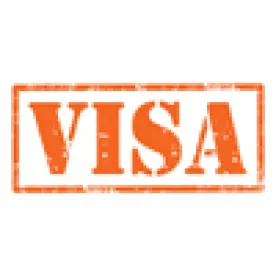Was your petition one of the estimated 148,000 not selected in this year’s H-1B lottery? Is your client from one of the 79 countries with which the United States maintains treaties of commerce or navigation?
A free trade or treaty based visa may serve as a good alternative during times of H-1B unavailability. Both the TN and E visa categories have flexible features that can be instrumental to establishing a U.S. presence for a foreign company.
TN Visa
Under the North American Free Trade Agreement (NAFTA), qualifying citizens of Canada and Mexico may work for employers in the United States for a temporary duration with TN (Trade NAFTA) status. TN status can be granted for up to three years and extended in up to three-year increments. This visa option has a number of pros, as there is no limit on the number of years a person may remain in the U.S. under TN status as long as the individual maintains “nonimmigrant intent,” meaning no intent to remain in the U.S. permanently. The visa category also does not have a limit on how many TN applications may be approved each year. Canadian citizens may apply directly at a U.S. port of entry, while Mexican citizens must apply at a U.S. consulate. Applying for TN status does not require a labor condition application (LCA) and there are no prevailing wage requirements, unlike the H-1B.
The most specific attribute of the TN visa is its limitation to certain professions, as TN status is available for 63 specific professions that have their own prerequisites. From accountants to zoologists, the professions cover a wide range, but the required credentials for each can vary from bachelor’s degrees to work experience.
E-1 or E-2 Visa
If a needed employee or entrepreneur is a citizen of a country with which the United States maintains a treaty, the E visa treaty category is another option for foreign enterprises to build a commercial presence in the U.S. The E-1, or treaty trader visa, allows a national of a treaty country to be admitted to the U.S. to engage in international trade. The E-2, or treaty investor visa, similarly allows a national of a treaty country to be admitted when investing a sizable amount of capital in a U.S. business. Both categories require the U.S. enterprise to be majority owned by nationals of the treaty country, and both are available to either owners or essential employees. The 79 treaty countries can be found on the list of U.S. Department of State’s Treaty Countries.
Similar to the TN visa, there is no limit to the number of E-1 or E-2 visas that may be approved per year. While qualified individuals will be allowed a maximum initial stay of two years, requests for extension may be granted in two year increments. Also similar to the TN visa, there is no maximum limit to the number of extensions that can be granted so long as individuals maintain nonimmigrant intent.
While the E-1 and E-2 visa categories provide flexible limits and terms in comparison to other work-authorized visa classifications, great attention and time should be dedicated to the initial filing process. Overall, the federal requirements come down to three main attributes:
1. The existence of a treaty of commerce or trade;
2. A common nationality between the visa sponsor and the sponsored foreign national; and
3. The existence of qualifying international trade or substantial investment in a U.S. enterprise.
Although many countries provide for both E-1 and E-2 visas, some countries provide for only one and many countries have no E treaty. The Department of State’s Treaty Countries list thus provides a helpful resource in navigating the first step.
E-3 & H-1B1 Visas
The E-3 classification provides nationals of Australia the ability to come to the U.S. solely to perform services in a specialty occupation. A specialty occupation requires theoretical and practical application of a specific area of knowledge in professional fields and a bachelor’s degree as a minimum for entry. The H-1B1 classification provides citizens of Chile and Singapore the ability to work in a specialty occupation as well, based upon a treaty with each country respectively. Unlike the TN, E-1 and E-2 visa categories, there is a quota on the number of E-3 and H-1B1 visas that can be issued each year. However, the number of E-3 and H-1B1 visas issued typically falls well below the quota available each year. Similar to the H-1B, the form I-129 Petition for Nonimmigrant Worker can be utilized to apply for E-3 or H-1B1 approval. Unlike for the H-1B, an E-3 or H-1B1 applicant also has the option to apply directly at a U.S. Consulate.
With the flexibility and unique features of the various trade and treaty visas, foreign companies may benefit from choosing one of these options as an H-1B alternative.



 />i
/>i
